Rotel A11 and CD11: Audio manufacturer Rotel has approximately sixty years of experience building amplifiers and sources. An amplifier is usually the heart and central control center of an audio set, regardless of price. Rotel pays a lot of attention to the power of its amplifiers, regardless of the price. In our test room is the A11 Tribute, an affordable integrated Class AB amplifier with analog inputs and Bluetooth connectivity. Among Rotel A11 and CD11, The A11 Tribute will be joined by Rotel’s CD player CD11 Tribute. Both devices have been modified according to the insights of the legendary Ken Ishiwata. How many functions and music enjoyment do these affordable components from Rotel provide?
Rotel A11 and CD11: the entry-level Rotel
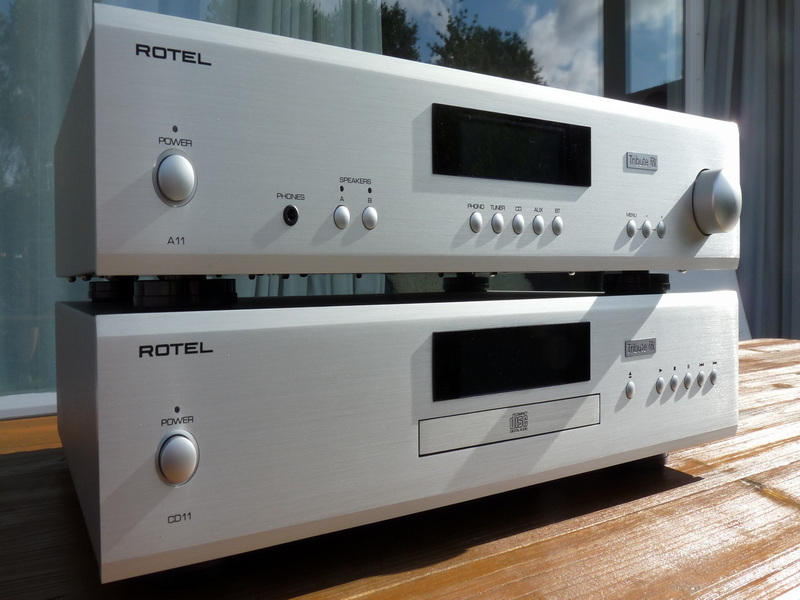
The Japanese audio company Rotel has been around for about sixty years. Amplifiers have always been at the heart of the company’s portfolio. Initially these were stereo amplifiers, but later multi-channel amplifiers were added. About a year ago, Rotel released a set of flagship amplifiers called P5 and M8 under the Michi sub-brand (also read our review on the Rotel Michi P5 and M8 ). The P5 and M8 perform very well, but they are big, heavy and not very cheap (NB: the M8 is a mono power amplifier, so two of them are needed).
The Michi product line is thus at the top of Rotel’s portfolio. Until recently, at the bottom of the portfolio was the integrated amplifier A10. We found the A11 one step higher, but this too has been phased out and now succeeded by the A11 Tribute, our test sample and now the entry-level model from Rotel. It is of course nice to know that large and heavy flagships perform well, but not everyone has the space and budget for flagships. The A11 (Tribute) is liftable and affordable and also promises the necessary music enjoyment.
Every manufacturer has its spearheads when it comes to choices in the construction of hi-fi devices. One of Rotel’s spearheads is the linear power supply in the entire portfolio of amplifiers. Rotel makes its own toroidal transformers and carries out strict checks on the components of the toroidal transformers. For example, the copper wire and the iron core made by suppliers must meet Rotel’s high standards. The power supply for the A11 (Tribute) is also based on a toroidal transformer made by Rotel (even the ex-entry-level A10 was equipped with a toroidal transformer). Toroidal transformers are relatively expensive components and switching power supplies are much cheaper to build, but Rotel swears by linear power supplies with a toroidal transformer at the heart.

Rotel also builds CD players. The CD11 was the Japanese company’s cheapest model and has now been succeeded by the CD11 Tribute. Despite the rise of streaming and network players, CD players still have a right to exist. After all, pressed CDs – provided they are treated properly – are practically indestructible and there are hundreds of millions of CDs in the world. Both the A11 and CD11 are cost-effective but deliver uncompromising quality, says Rotel. That also applies to the Tribute versions and more on that now.

Rotel A11 Tribute and CD11 Tribute: Modified by Ken Ishiwata
The original A11 and CD11 were announced at ISE in February 2019 . Rotel launched a Tribute version of both devices about a year and a half later . The A11 Tribute and CD11 Tribute have been modified by none other than Ken Ishiwata, the famous top engineer who switched the temporary with the eternal in late 2019.
Ishiwata-san has been widely admired in the hi-fi industry for its unique ability to identify perfect products for modification and take their performance to a new level, often with only a modest price increase. That was exactly the goal of Ishiwata, who, together with the Rotel technical team, offered an initial assessment for the new specification of the A11 and CD11. From there, preliminary prototypes were produced before final specifications were approved by Rotel. Unfortunately , Ishiwata passed away in November 2019 after the changes to the first prototypes were approved. It was then Karl-Heinz Fink’s job to implement the original vision.
Thus the A11 Tribute and the CD11 Tribute from Rotel were born.
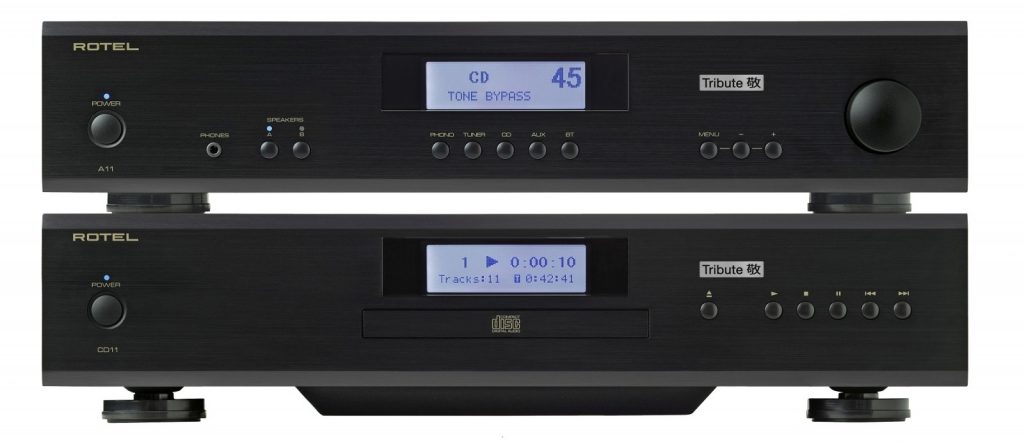
Rotel A11 Tribute: integrated amplifier with analog inputs and bluetooth
The Rotel A11 Tribute has a sleek and more or less classic shape. The dimensions are 430 x 93 x 345 millimeters (W x H x D). The volume knob is on the far right and the power button is mounted on the far left of the front panel. Source selector buttons are located below the central display. Rotel has not applied any decorative elements. The appearance of the A11 Tribute radiates a certain calm.
The A11 Tribute comes with a fully functional RR-AX1401 IR remote control, which is made of plastic. The remote control is comfortable to hold. The volume control can be found by touch.

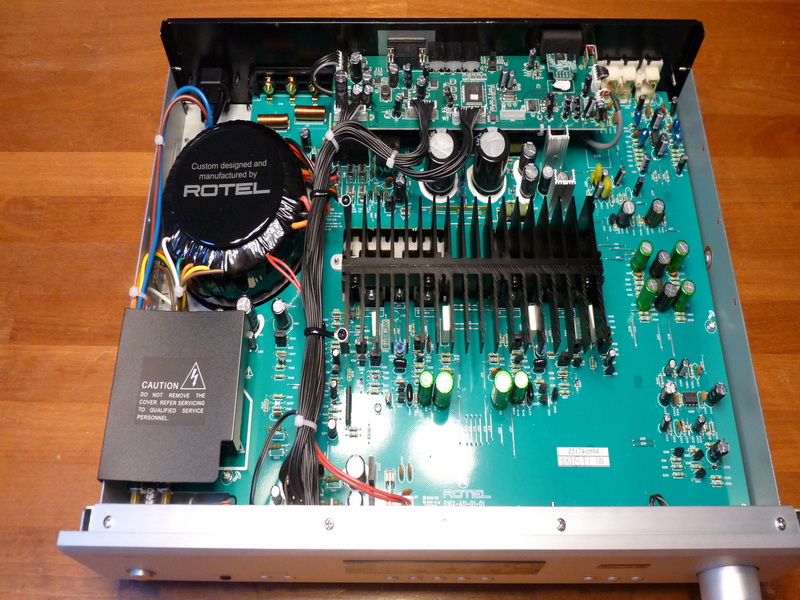
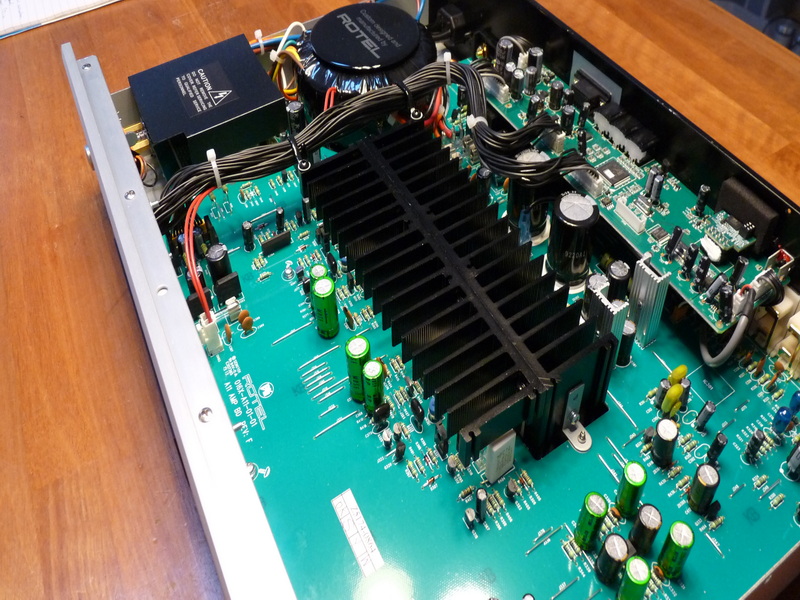
The user can control more than the front plate suggests at first glance. The A11 (Tribute) is equipped with a tone and balance control. The power-on volume can also be set and it is even possible to set the volume separately for each input. The user can use the “Off Timer” function to have the A11 switch off automatically after a certain time of inactivity that you can choose. The A11 can also be put into “Signal Sense” mode to turn on / off automatically depending on whether a music signal is supplied to one of the inputs. This also offers the possibility to put the A11 in a cupboard and to have it switched on / off with, for example, a television. All these functions can be controlled by diving into the menu with the buttons to the right of the display. The illumination of the display and the brightness of the indicator lights can also be controlled. If desired, a repeater for the IR remote control can be connected, so that the A11 can be placed behind a cabinet door. Although the A11 does not really heat up in normal use, sufficient ventilation space must be considered.


The user has access to four analog cinch line inputs with a sensitivity of 180 mVolts and an impedance of 47 kOhm. Then there is also a turntable input for mm elements with a sensitivity of 2.3 mVolt, which also has an impedance of 47 kOhm. The A11 (Tribute) has no digital inputs but does have Bluetooth connectivity (with support for aptX and AAC). The digital signal is handled by a Texas Instruments 24-bit / 192 kHz DAC. The A11 is also equipped with a preamp output so that a power amplifier or subwoofer could be connected if necessary.
The user can connect two pairs of speakers and turn each pair on or off individually using the buttons on the front. The speaker outputs are relay controlled and can also be turned on / off with the IR remote control. A 3.5 millimeter jack plug headphone connection is placed on the front. Plugging in headphones does not automatically turn off power to the speakers. The user must do this himself with the buttons on the front or on the supplied IR remote control.
Rotel A11 Tribute: differ from the non-Tribute version
The Tribute version can and does exactly the same as its regular brother, who has since been retired. There is no other user guide for the Tribute version. Rotel’s A11 Tribute does not differ from the “regular” A11 in appearance and functions, except that the Tribute version has a badge affixed to the right of the display. The badge says “Tribute” and next to it is a Japanese character that stands for as much as “respect”. So there is hardly any difference between the devices on the outside. The differences are on the insid
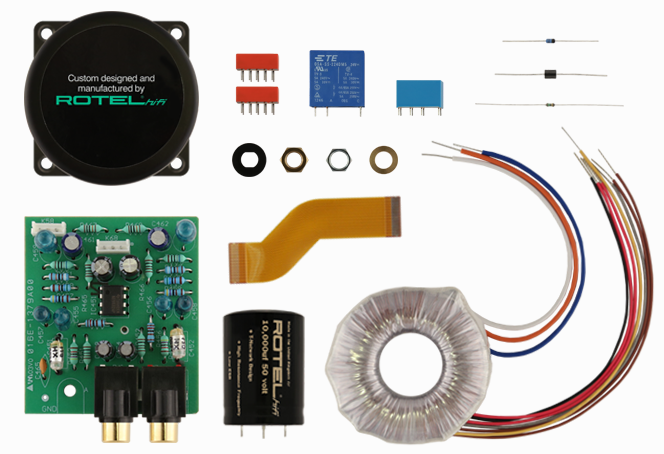
In the amp stage of the A11 Tribute, all ten capacitors as well as two resistors in the signal path have been changed. In addition, half a dozen capacitors have been replaced in the preamplifier. These changes affect more than fifty percent of the components in the signal path. Furthermore, all six capacitors in the volume phase were also replaced by better ones. Finally, custom damping materials were added to the A11 Tribute’s enclosure to further isolate and dampen any vibrations in the unit.
Rotel A11 Tribute: technical specifications
The A11 (Tribute) operates in class AB. Rotel specifies a maximum power of 50 watts per channel at eight ohms over a bandwidth of 20 Hz to 20 kHz. The deformation remains below 0.03 percent.

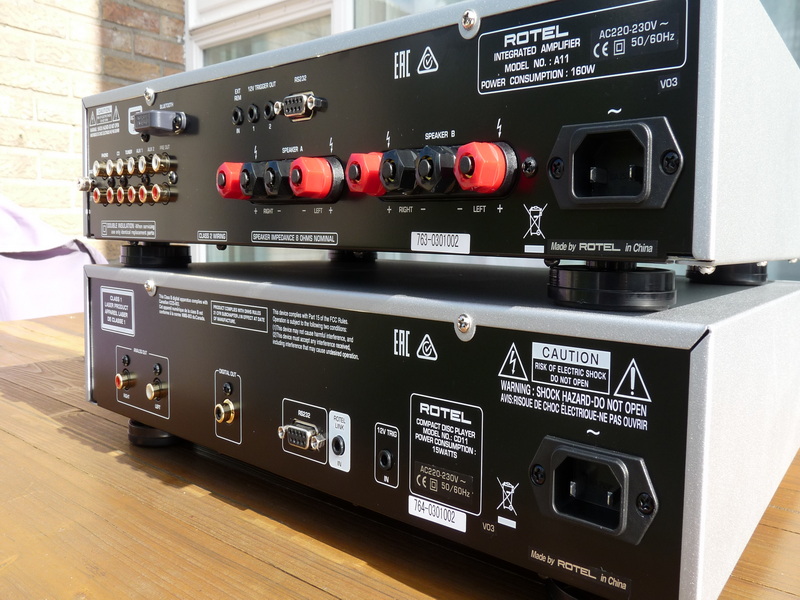
The frequency range of the A11 (Tribute) is 20 Hz to 20 kHz (± 0.5 dB) on the phono input. The line inputs have a frequency range of 10 Hz to 100 kHz (± 0.5 dB). The S / N ratio is 85 dB on the phono input and 100 dB on the line inputs according to the manufacturer’s instructions. The damping factor has a decent value of 140. These are all decent figures for a device in this price range.
The A11 (Tribute) and the supplied IR remote control make a modest and solid impression. We’re going to take a look at the CD11 Tribute.
Rotel CD11 Tribute: CD player with analog and digital output

The CD11 is a CD player that perfectly matches the A11 with its appearance and performance. Just like the front plate of the A11, the front plate of the CD11 is an example of tranquility, simplicity and modesty. The basic control buttons on the front are of course sufficient for basic operation, but the included plastic IR remote control (type RR-D99) offers even more functions, such as compiling and playing a selection of tracks from the inserted CD.

Rotel’s CD11 (Tribute) also claims to feature the company’s balanced design topology of digital and analog circuits. Rotel’s Balanced Design Concept should not be confused with a balanced design that is expressed through the placement of XLR connections. Rotel’s Balanced Design Concept is Rotel’s designation of a choice of better components at locations in the circuitry that can positively influence sound quality. The A11 and CD11 (Tribute) do not have XLR connections.
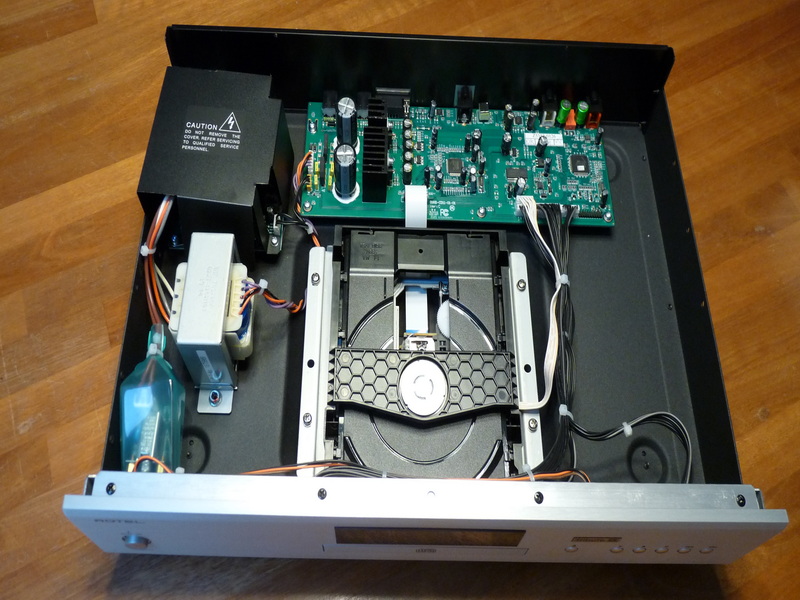
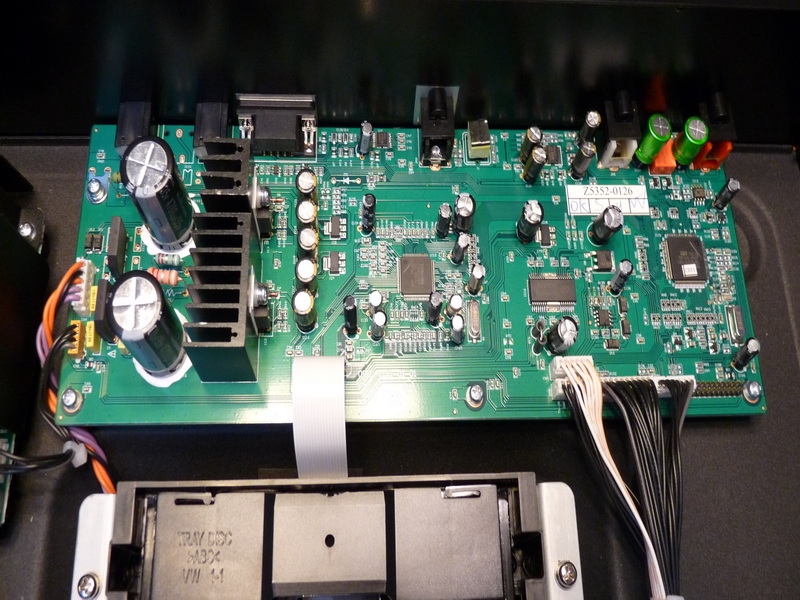
The CD tray and drive of the CD11 are placed in the center of the front plate. Above this is the display, to the right the elementary operating buttons. The CD11 is equipped with an analog cinch output. Furthermore, a Rotel has installed a digital cinch output so that an external DA converter can be used if necessary. The incoming and outgoing movement of the CD tray makes little noise and the drive cannot be heard at the listening position. The DAC chip is from the American Texas Instruments.
Rotel specifies a frequency range of 20 Hz to 20 kHz, a common value for CD players. The distortion is 0.005 percent (at 1 kHz). The specified channel spacing is greater than 115 dB (at 10 kHz) and the A-weighted S / N ratio is greater than 125 dB. Basically, distortion and noise are at a negligible level.
Rotel CD11 Tribute: difference with the non-Tribute version
The appearance, functionality and also the manual of the CD11 Tribute from Rotel does not differ from the regular version of the CD11 (which has since been phased out), except for the Tribute plate to the right of the central display. The changes are under the hood.
The Tribute version of the CD11 features eight capacitor changes compared to Rotel’s original CD11 and one resistance change in the DAC stage which, incidentally, also includes a Texas Instruments 24-bit / 192 kHz DA converter. All nine capacitors of the power supply have been swapped with improved ones. Internal vibration damping was also addressed with modified damping material added to the top of the case. At the same time, further changes were made to the mechanical and electrical grounding of the CD player.
We’re going to connect the A11 Tribute and the CD11 Tribute in the test environment and then we’re going to do what it’s all about: sit in a relaxed setting and listen to music.

Rotel A11 Tribute and CD11 Tribute: test environment
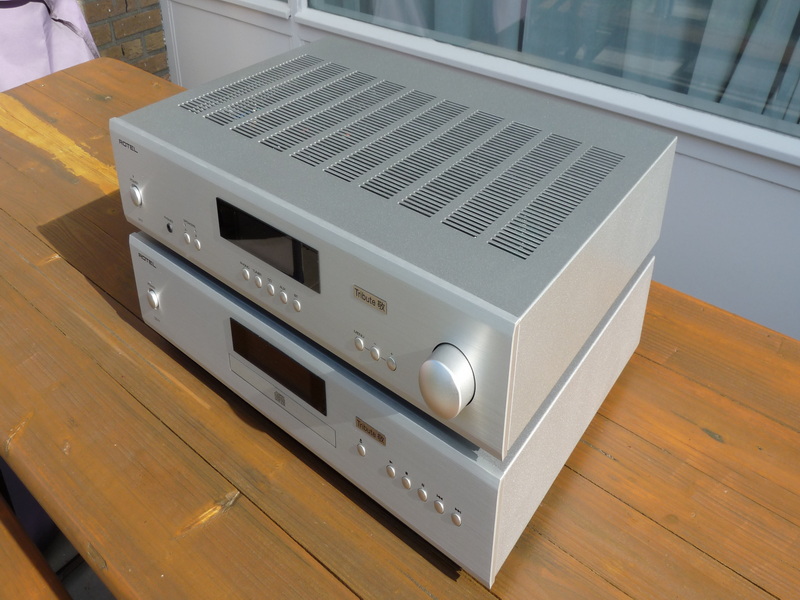
The A11 Tribute has been able to power two different dynamic loudspeakers during the test period. The floorstanding Premium 7 from the Swiss speaker builder Piega, the permanent resident of the listening room, is a floorstanding three-way loudspeaker with an impedance of four ohms. During the test period, a pair of speaker model Orchestra of the German Sonoro was also available. The Orchestra is a two-way monitor loudspeaker with an impedance of four ohms that, with a price of 1,000 euros per pair, fits fairly well with the Rotel set (also read our review of the Sonoro Orchestra ).
Music signal came from the CD11 Tribute, of course, but also from a Wadia 321 DAC that receives digital signal from a modified Sonos Connect . To test the bluetooth connectivity, an Android tablet from Samsung with a micro-SD card of 1 TB and an Android smartphone, also with a storage capacity of 1 TB, was used. The vast majority of the music consisted of WAV files from bit-perfectly ripped CDs.
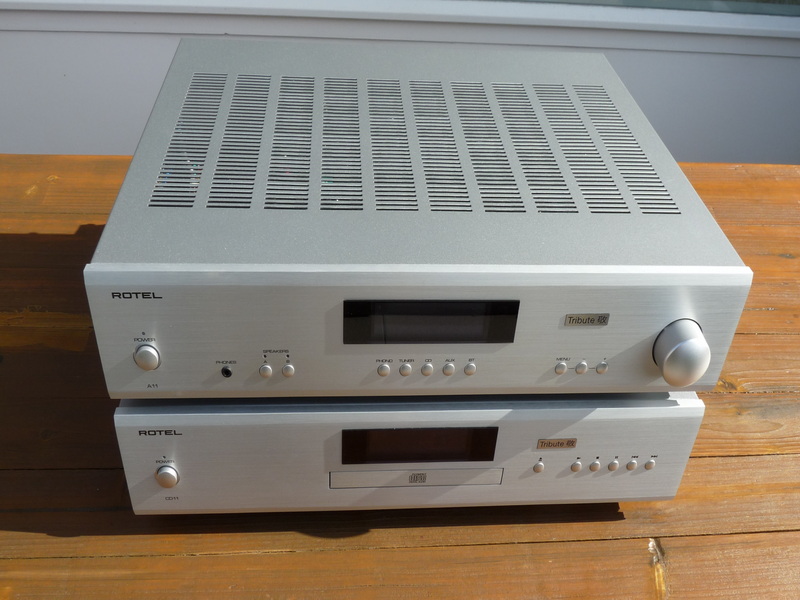
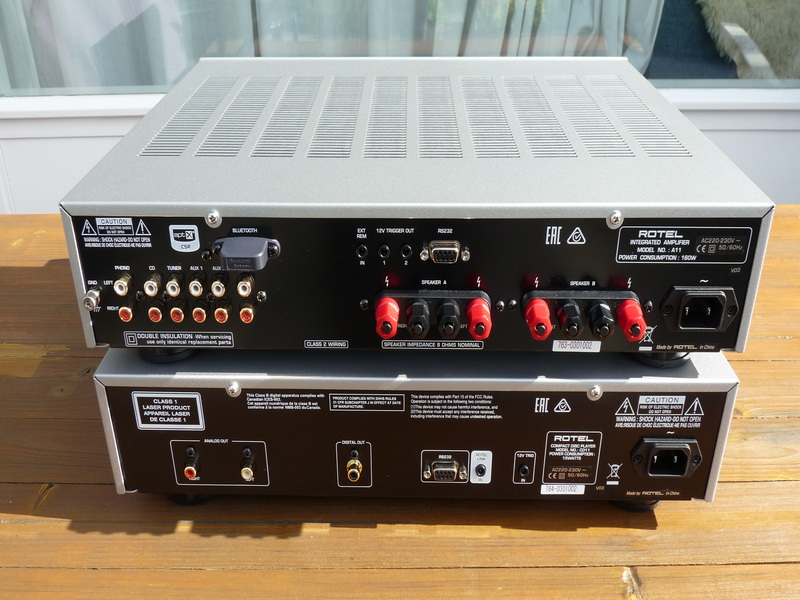
We sit down, IR remote controls, tablet and smartphone are within reach, the cat happily jumps on our lap and we start listening to music.
Neutral, detailed sound with solid foundation
We kick off with the Android tablet from Samsung. The Bluetooth connection with the A11 Tribute is established within seconds. We choose “Spanish Fly”, a short acoustic guitar track from Van Halen’s second album. The nuances of the dexterous playing of the recently deceased guitar legend Eddie van Halen are clearly visible. Eddie’s typical “two-hand tapping” in which the neck of the guitar is played with both hands, alternates with the “normal” picking and plucking of the strings. The warm sound is alternated with a metallic sound. The A11 Tribute flawlessly reproduces the nuances.
We stay with Van Halen for a while (to recall childhood memories?) And play the slightly more than one and a half minutes long “Eruption” from the first album. “Eruption” is not acoustic, all stops and the volume are turned up. By the way, playing “Eruption” was at the time (or still?) The perfect way to scare parents who had stuck with Dave Brubeck, The Beatles, Engelbert Humperdinck or The Shadows. See also the film “Back To The Future” with Michael J. Fox in the lead role, in which the music of Van Halen plays a role (and makes various people out of the box). But that of course completely aside. “Eruption” is an old originally analog recording that contains noise, coming from the open-ended tube amplifiers of Van Halen. The noise is clearly noticeable in the short silence that falls on half of the song. “Eruption” has great dynamic outbursts and rushes around the listener’s ears like a pleasant whirlwind. The A11 Tribute doesn’t budge, presents an open sound image despite the many harmonics and happily whirls along with Eddie van Halen. We will miss Eddie. The consolation is that digital recordings do not technically wear out and age, no matter how often they are played or copied.

We stick with guitar music for a while and choose “Loose The Blues” from the album “The Five Great Guitars Live”, a project of the guitarists Jan Kuiper, Harry Sacksioni, Eric Vaarzon Morel, Digmon Roovers and Zoumana Diarra. The listener imagines himself in the concert hall. The sound of the recording is warm. The guitarists can be followed separately. The A11 Tribute neatly keeps them apart and lets them play together without making a mess. The sound is dynamic and wall-to-wall and the sound image is open.
The connection via bluetooth is stutter-free. The difference between a wireless or wired WAV file is small and often not even perceptible.
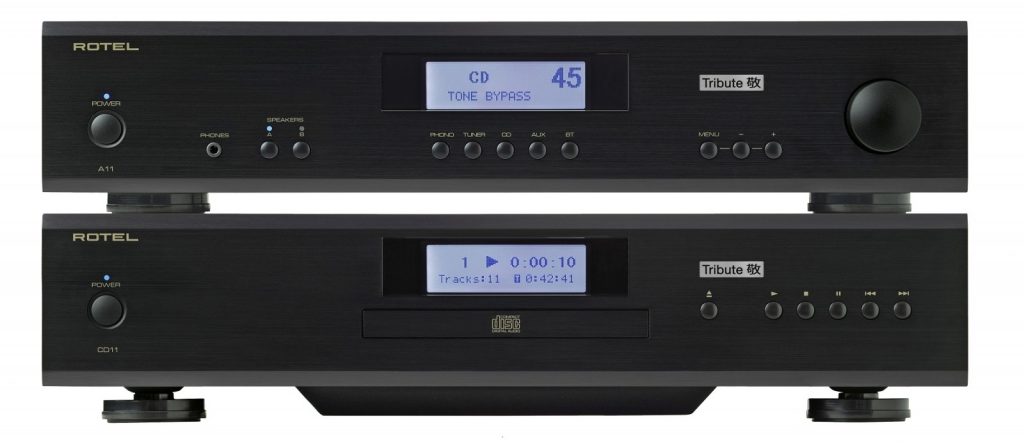
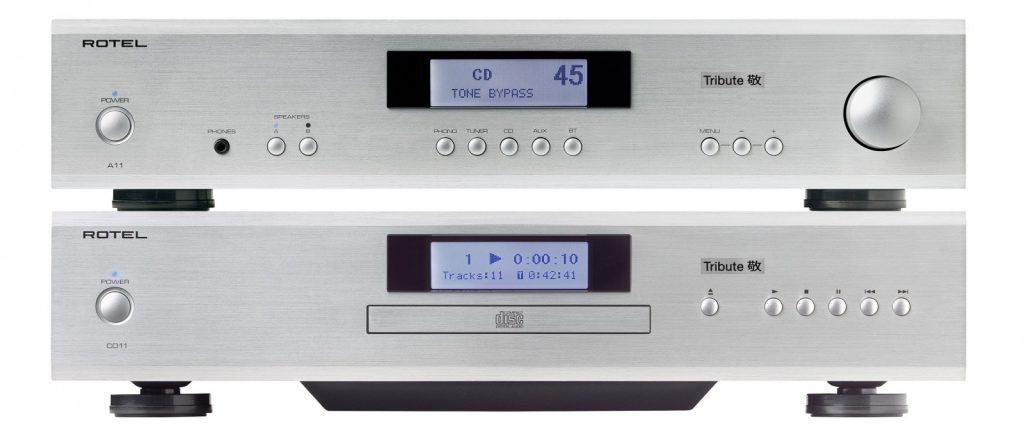
We take the CD album “Mer De Noms” from “A Perfect Circle” and put the album in the CD11 Tribute. At the same time, we let the Sonos Connect play the same album (the WAV files are on a NAS of Synology). We choose the second number on both devices called “Magdalena”. The put-deep lows in the recording are challenging, but the A11 Tribute has no qualms about it. We are positively surprised by the A11 Tribute’s bass response. The bass reproduction is not woolly and not lavish, but tight and controlled. We switch back and forth between the CD11 Tribute and the Wadia 321 DAC. Both devices play the same music. The overall appearance of the CD11 is positive. The sound quality is uncomfortably close to that of the much more expensive Wadia 321 DAC. Once again it is striking that DA converters have made relatively large strides forward in the past ten years. Nowadays you can buy a sound quality for a few hundred euros that cost a few thousand euros ten years and more ago, the CD11 Tribute tells us delicately.
We repeat the same trick with Roger Waters’ album “The Pros & Cons Of Hitch Hiking”, ie we put the CD disc in the CD11 Tribute and choose the same WAV files on the Sonos Connect. We play the tenth track that is kicked off by Eric Clapton’s guitar. Waters sings with a slight hoarseness. The A11 Tribute has no trouble controlling Piega’s relatively large floorstanding Premium 7s. “Effortless” is a phrase that often comes to mind when we try to interpret sound and degree of control through the A11 Tribute. The CD11 Tribute stands its ground against the Wadia 321 DAC.
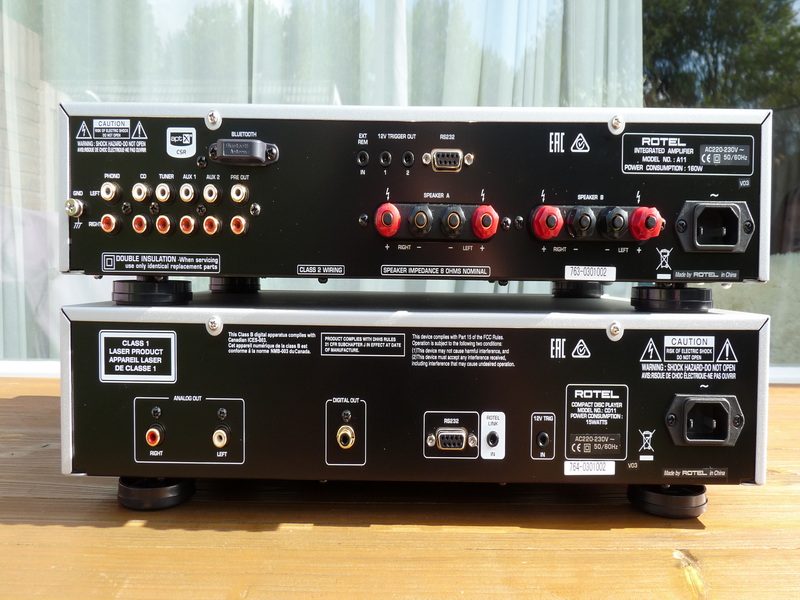
The Rotel set has a neutral and detailed sound with a pleasant and solid low foundation, regardless of which speaker is connected. Differences in sound are mainly caused by switching speakers. Switching the source – tablet via bluetooth, CD11 Tribute or Wadia 321 DAC – carries much less weight. After all, in all cases there is a music signal with the resolution of a CD. The Premium 7 from Piega sounds a bit cooler than the Orchestra from Sonoro. The bass response of the Piega’s picks up a bit lower. That is not surprising when the big difference in size is taken into account. The Rotel set does not really have a timbre of its own and mainly functions as a conduit for the sound of the source and of course the recording. It is mainly the speakers that determine the sound, not for the first time.
We let ourselves be carried away by conductor Vaclav Neumann who has the Czech Philharmonic Orchestra play Anton Dvorak’s 9th symphony. We choose the final piece. The violins and brass have an edge to sharpness. At the same time, the cellos and woodwinds have an edge of warmth. Sharpness and warmth play nicely together and we forget about the devices for a moment and let the music take us along.
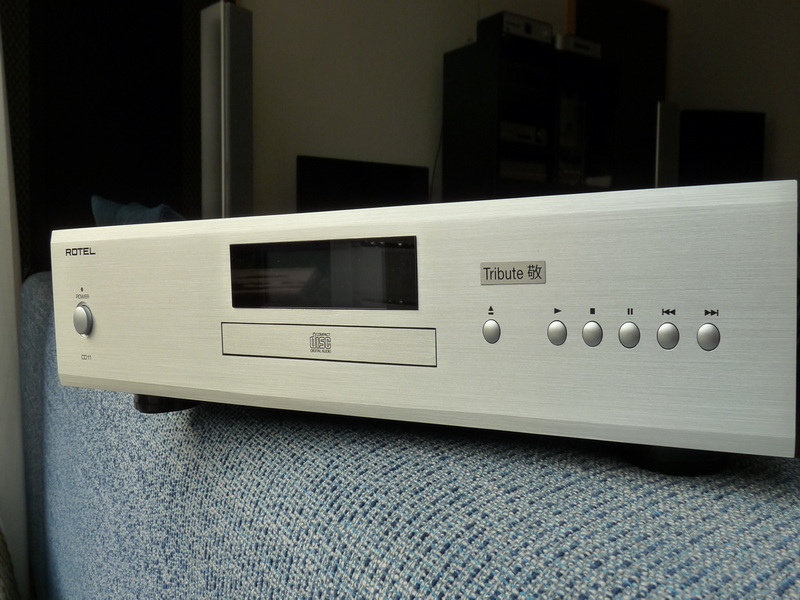
We have to close and finally play “Amazing Flight” from Ayreon’s “Into The Electric Castle”. Arjen Lucassen takes us on a flight through space. The sound image and stage are wider and deeper than the listening room. Those who close their eyes run the risk of experiencing a feeling of weightlessness (no, we are sober). Some instruments have no fixed place and move loosely in space.
The Rotel A11 Tribute sounds really good when the suggested retail price is taken into account. In the distance, the sound reminds us of the much more expensive Michi P5 and M8, but the latter go a bit further when it comes to resolution, width, depth and control over all tonal areas. That is also allowed / necessary for an amount of more than 15,000 euros. The A11 Tribute costs only 600 euros and offers a great deal of music pleasure for this amount.
Place in the market
For those who have nothing else than a Bluetooth speaker or an all-in-one active speaker, whether or not equipped with so-called smart functions, a world can open up by listening to a relatively simple stereo amplifier with two passive speakers. The A11 Tribute is an easy to operate and solidly built amplifier with a sound quality that plays all bluetooth and smart speakers off the shelf. Many households have a soundbar because it is a quick and easy improvement of the sound of a television. However, the sound quality of a soundbar does not, on average, match the sound quality of a stereo amplifier with two passive speakers that are several meters apart, regardless of whether there are floorstanders or monitor speakers.
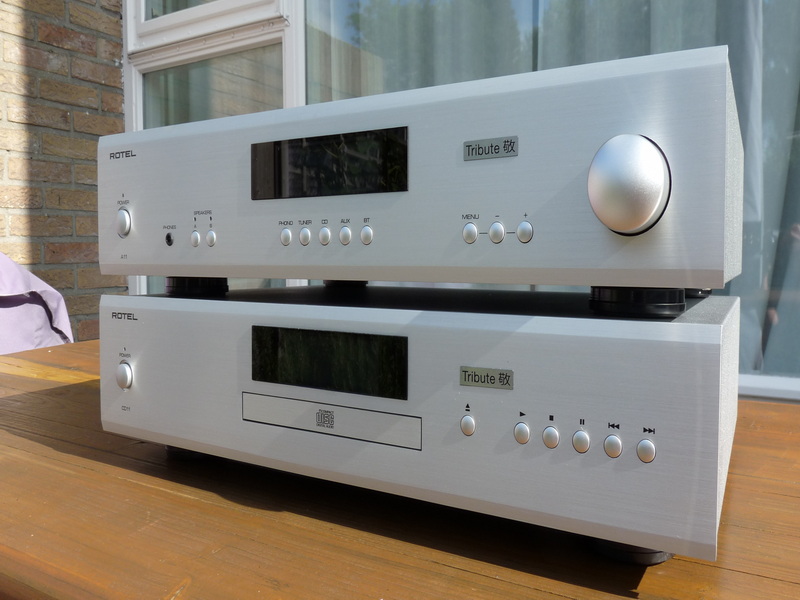
The Signal Sense mode and the possibility to connect a repeater for the IR remote control in Rotel A11 and CD11, give the option to place the A11 Tribute out of sight and let it switch with the television. The A11 Tribute has more connections than a soundbar or bluetooth or smart speaker. The vinyl enthusiast can also connect their record player. And digital music can easily be sent wirelessly from a tablet or smartphone to the A11 Tribute.
For the owner and lover of CDs, the CD11 Tribute can be a pleasant surprise. The sound is completely up to date and is considerably better than the sound of similarly priced devices from earlier years. The operation is silent, the operation is simple.
Rotel A11 Tribute and CD11 Tribute: conclusion
The sleepover of the Rotel A11 and CD11 Tribute was pleasant. Rotel has made two solid and good-sounding devices for an acceptable price. The sound is neutral and rich in detail. The reproduction of all tone areas is above expectations, whereby the good reproduction of low tones is striking. Both devices seem to be made for a long life.





